Brass is a beautiful and durable metal used in home decor, musical instruments, antiques, and cookware. However, over time, it can tarnish due to exposure to air and moisture. If you want to restore your brass items to their original luster, this guide will show you how to clean brass effectively with household ingredients and commercial cleaners.
Understanding Brass and Its Composition
Before diving into cleaning methods, it’s important to know what brass is. Brass is an alloy of copper and zinc, with varying compositions that influence its color and durability. Some brass items may also have a lacquer coating, which affects how they should be cleaned.
Types of Brass
Solid Brass: Made entirely of copper and zinc, it tarnishes over time but is easy to clean.
Brass Plated: A thin layer of brass over another metal. Cleaning should be gentle to avoid removing the plating.
Lacquered Brass: Coated with a protective layer to prevent tarnishing. Requires special care to avoid damaging the lacquer.
How to Clean Brass at Home
Here are eight easy ways to clean brass using household ingredients and professional cleaners:
1. Lemon and Salt
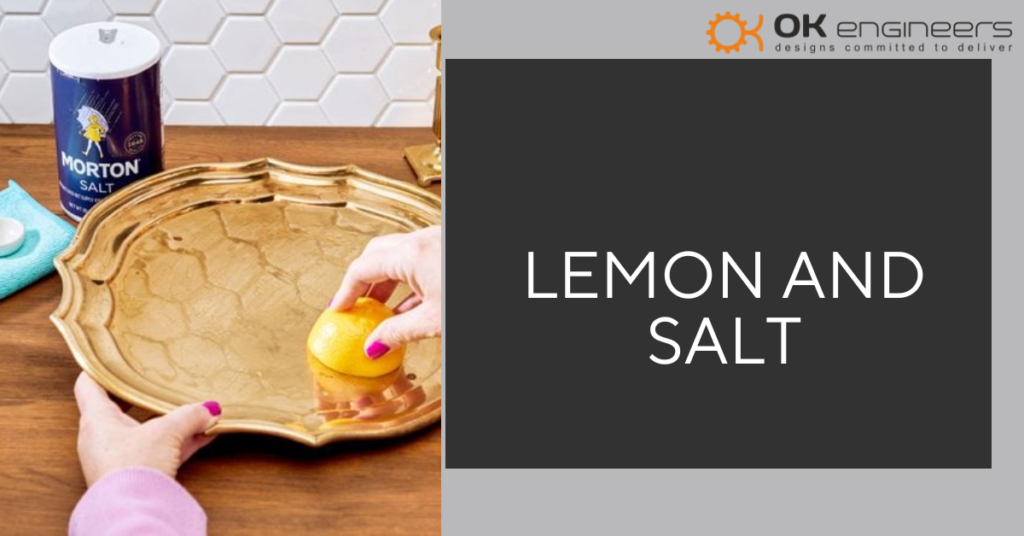
Lemon’s acidity and salt’s abrasiveness make an excellent natural cleaner for brass.
Steps:
- Take a lemon, cut in two pieces and sprinkle salt on both the pieces.
- Rub the lemon over the brass surface, focusing on tarnished areas.
- Let it be for a few minutes and rinse it with lukewarm water.
- Dry and buff with a soft cloth.
- Repeat if necessary for stubborn tarnish.
2. Vinegar and Baking Soda Paste
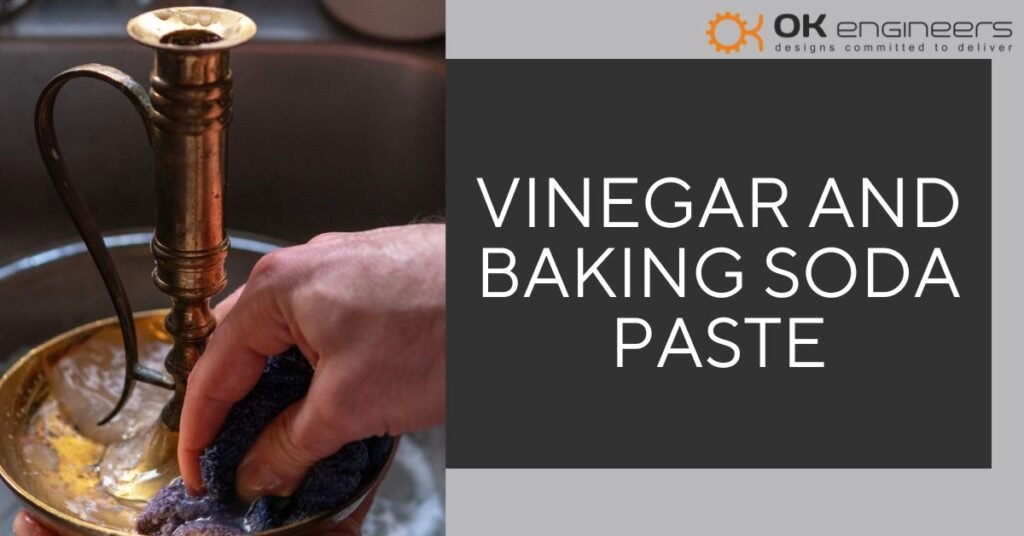
This combination creates a powerful reaction that removes tarnish and clean brass easily.
Steps:
- Combine an equal amount of white vinegar and baking soda, stirring until a thick paste forms.
- Apply the paste to the brass and let it sit for 5-10 minutes.
- Scrub gently with a soft-bristled brush or cloth.
- Rinse with warm water and dry thoroughly.
- For extra shine, buff with a microfiber cloth.
3. Ketchup or Tomato Sauce
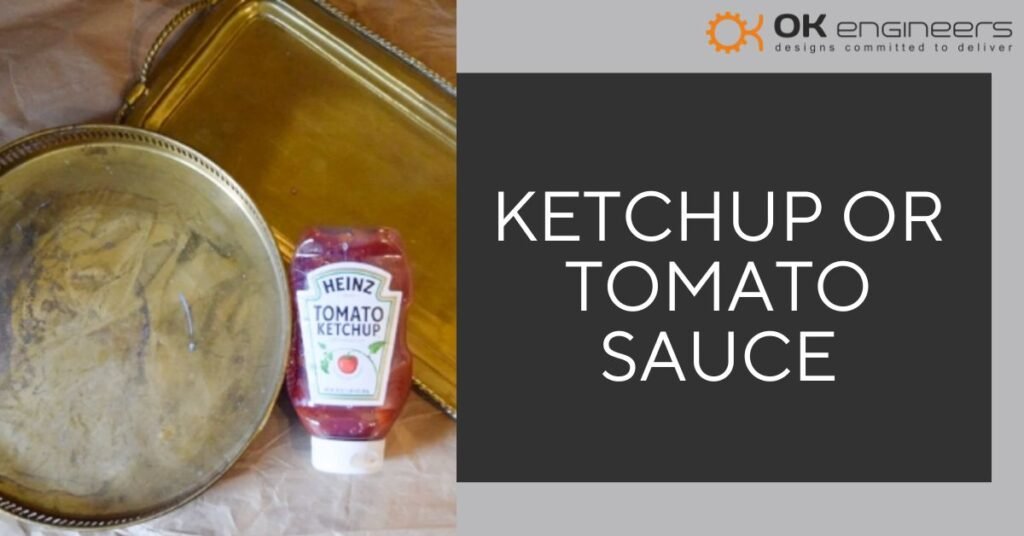
Tomato-based products contain mild acids that break down tarnish.
Steps:
- Take a thin layer of ketchup and apply on brass.
- Let it sit for 10-15 minutes.
- Clean brass with a damp cloth and wash with water.
- Dry and polish with a microfiber cloth.
- Repeat if necessary for deep tarnish.
4. Flour, Salt, and Vinegar Paste
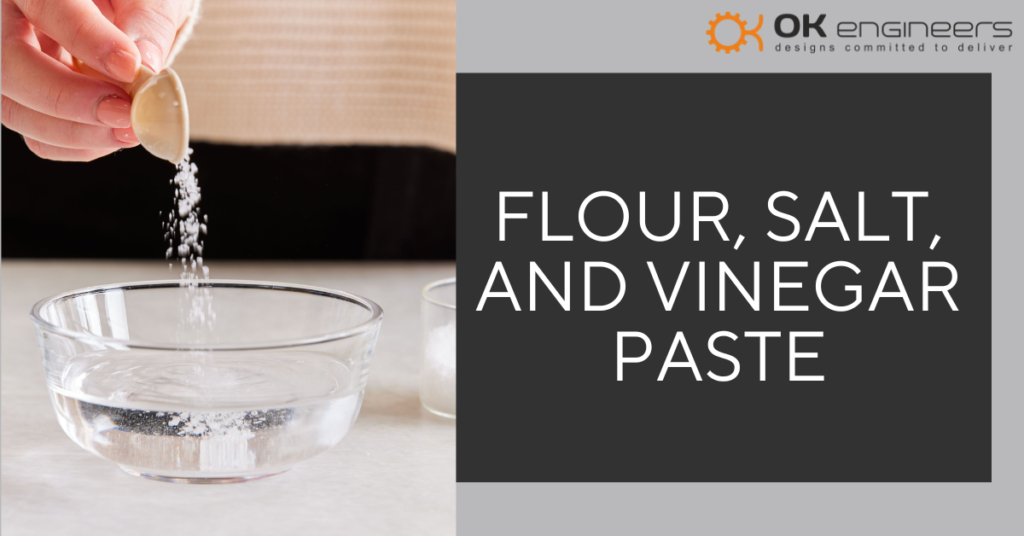
A traditional brass-cleaning recipe that is gentle yet effective.
Steps:
- Mix equal parts flour and salt with vinegar to create a paste.
- Coat a layer of the paste on brass and let it be for around 30 minutes.
- Rinse off with warm water and dry.
- Buff with a soft cloth for extra shine.
- For a deeper clean, repeat and let the paste sit longer.
5. Ammonia for Stubborn Tarnish
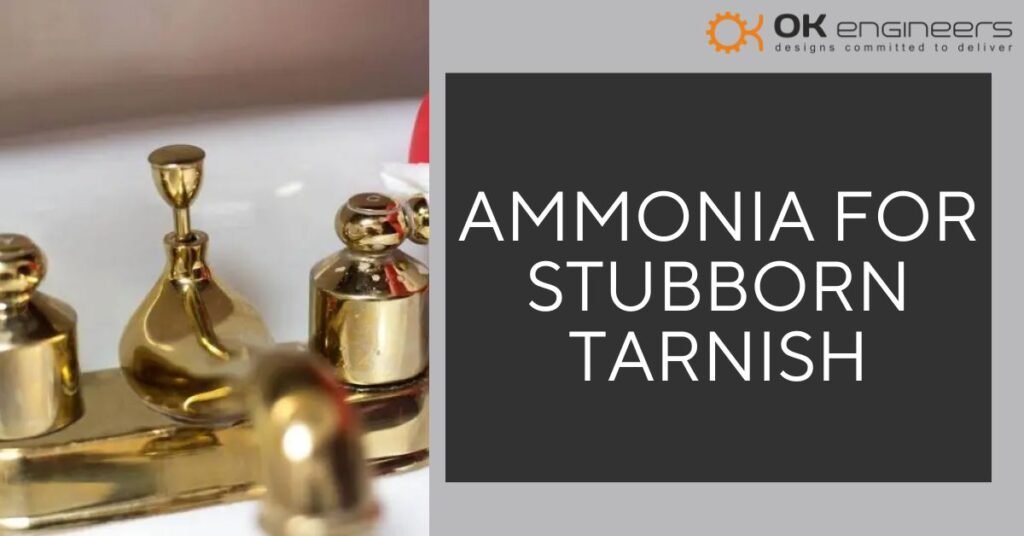
Ammonia is a strong cleaner that works well for heavily tarnished brass.
Steps:
- Mix one part ammonia with three parts water.
- Soak a soft cloth in the solution and wipe the brass.
- Rinse thoroughly and dry immediately.
- Polish with a brass cleaner if needed.
- Ensure ventilation when using ammonia, as fumes can be strong.
6. Soap and Water for Lacquered Brass
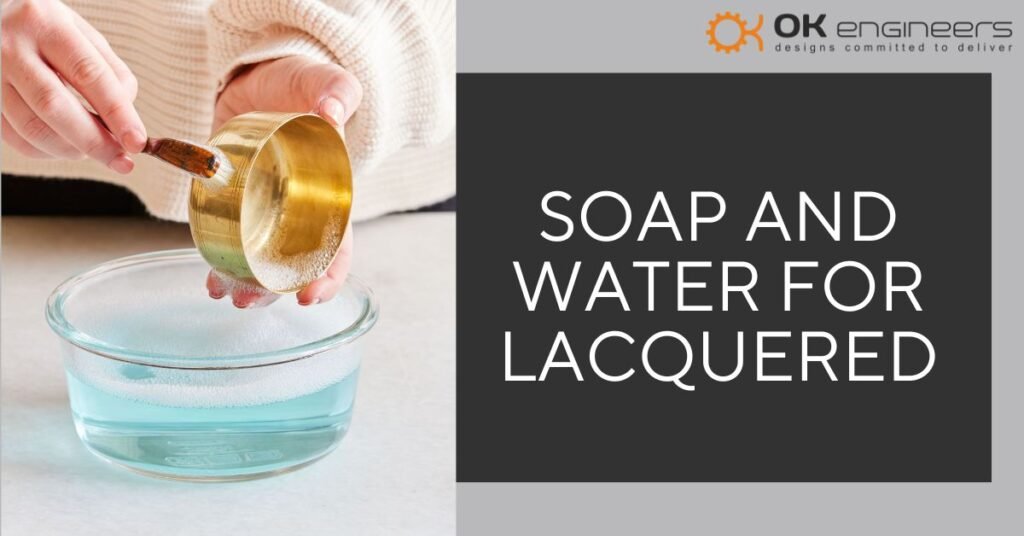
For lacquered brass, avoid abrasives to prevent damage.
Steps:
- Mix mild dish soap with warm water.
- Wipe the brass with a soft cloth dipped in soapy water.
- Rinse with a damp cloth and dry immediately.
- Avoid scrubbing, as this may damage the lacquer.
7. Commercial Brass Cleaners

If home remedies don’t work, brass cleaners provide a professional finish.
Steps:
- Use a small amount of the brass cleaner and apply with a soft cloth.
- Rub onto the brass in circular motions.
- Rinse or wipe with a damp cloth.
- Dry and buff for a polished shine.
- Follow the manufacturer’s instructions for best results.
8. Boiling Water and Baking Soda for Small Items
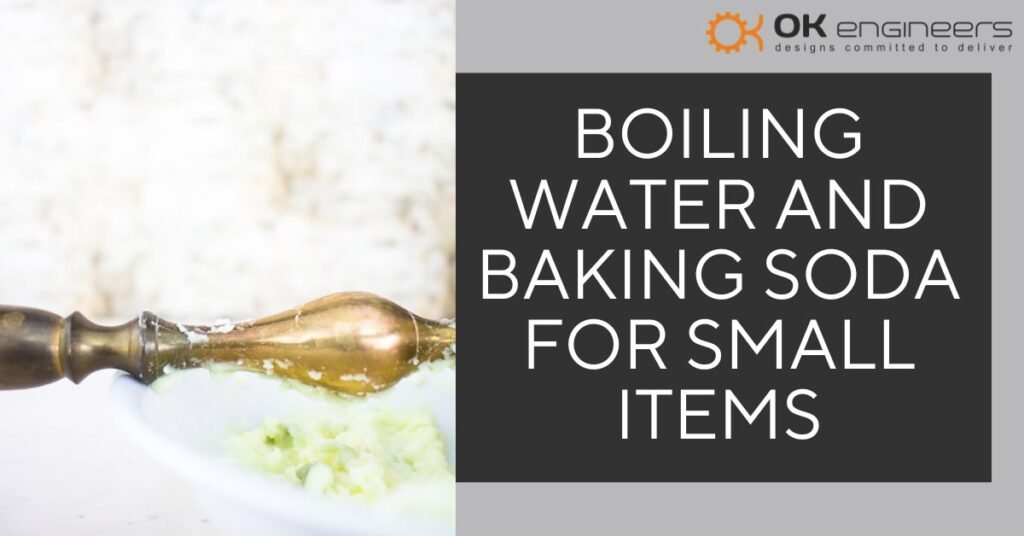
This method works well for brass jewelry and small objects.
Steps:
- Boil water and add a tablespoon of baking soda.
- Submerge brass items for a few minutes.
- Remove, rinse, and dry with a soft cloth.
- Buff to restore the shine.
- Avoid over-boiling, as excessive heat may weaken the brass.
- Preventing Tarnish and Maintaining Shine
Brass Cleaning in Ancient Times
Long before modern chemical cleaners, people in ancient civilizations developed their own methods for keeping brass items clean and shining. Ancient brass artifacts, utensils, and ornaments required maintenance to preserve their beauty and functionality. Here are some traditional methods used in different cultures to clean brass:
Egyptians and Their Cleaning Techniques
The ancient Egyptians were skilled metalworkers and used a variety of natural substances to clean brass and bronze items. They often relied on:
Vinegar and sand: A mixture of vinegar (or other acidic substances) and sand was used as an abrasive to scrub tarnished brass.
Lemon juice and clay: The combination of lemon’s acidity and the gentle scrubbing power of clay helped restore shine to brass objects.
Animal fats and oils: These were sometimes applied to create a protective layer against tarnish and oxidation.
Roman and Greek Methods
The Romans and Greeks, known for their advancements in metallurgy, also had unique brass-cleaning techniques:
Wine and salt paste: A paste made from sour wine (containing acetic acid) and salt was applied to brass items to remove tarnish.
Wood ash and water: The alkaline properties of ash helped break down oxidation and polish metal surfaces.
Urine-based cleaning: The ammonia in urine was used to dissolve grime and tarnish, a practice that continued into the medieval era.
Indian and Chinese Brass Cleaning Traditions
In India and China, brass and bronze were widely used for religious artifacts, utensils, and decorative items. Their cleaning methods included:
Tamarind paste: The natural acidity of tamarind helped dissolve tarnish and restore shine.
Rice water: Fermented rice water was used as a gentle cleanser to clean brass and maintain its purity.
Cow dung ash: In some regions, ash from dried cow dung was mixed with water to create a scrubbing paste that effectively polished brass surfaces.
Medieval European Practices
During the medieval period in Europe, brass items such as candlesticks, armor, and kitchenware were commonly cleaned using:
Beer or ale rinses: The mild acidity helped lift tarnish from brass and thus clean brass effectively.
Herbal pastes: A combination of crushed herbs, vinegar, and flour was used to clean metal objects.
Rough cloth polishing: People often used rough woolen or linen cloths to rub and polish brass until it gleamed.
Tips to Maintain Brass
To keep brass looking its best, follow these maintenance tips:
Store in a dry place: Moisture speeds up tarnishing.
Use anti-tarnish strips: These help absorb air pollutants.
Apply a thin coat of mineral oil or wax: This creates a protective barrier.
Polish regularly: A quick wipe with a soft cloth prevents buildup.
Wear gloves when handling brass items: Oils from your hands can contribute to tarnishing.
Avoid exposure to harsh chemicals: Some household cleaners can damage brass over time.
Keep brass away from direct sunlight: UV rays can cause discoloration over time.
Dust frequently: Dust accumulation can lead to corrosion.
Conclusion
With these eight easy methods, you can clean brass like a pro and keep your brass items shining for years to come. Whether using everyday household ingredients or commercial cleaners, maintaining brass is simple with the right techniques. Regular care prevents tarnish buildup, saving time and effort in the long run. Try these methods and enjoy the gleaming beauty of your brass possessions!
You may also like : Brass Lamp Parts, Brass Lamp Components

